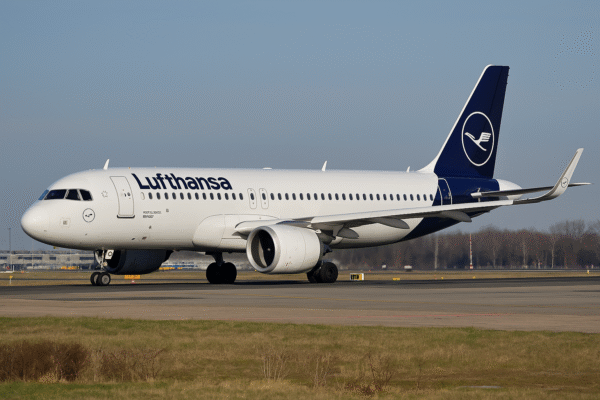Ethiopian Airlines has announced an ambitious plan that is set to redefine Africa’s aviation future: the opening of Bishoftu International Airport by 2030. This landmark development comes as part of Ethiopia’s strategy to modernize its aviation infrastructure and relieve congestion at Addis Ababa’s Bole International Airport. With rapid passenger growth and increasing cargo demand, the new airport will not only serve as a second gateway to the country but also elevate Ethiopia into a central role in global aviation.
The announcement reflects both the airline’s international expansion and the government’s long-term commitment to infrastructure growth. Once complete, Bishoftu International Airport will stand as one of Africa’s largest and most modern airports, solidifying Ethiopia’s position as a top aviation hub.
Why Ethiopia Needs a Second International Airport
Bole International Airport, though one of Africa’s busiest, is reaching its maximum capacity due to the rapid expansion of Ethiopian Airlines’ network. Serving millions of passengers annually, Bole has been the primary hub linking Africa to Europe, the Middle East, Asia, and the Americas. Yet, with double-digit growth in passenger traffic over recent years, congestion has become a pressing challenge.
The introduction of Bishoftu International Airport will alleviate these constraints by providing a second international hub with far greater capacity. This will allow Ethiopian Airlines to continue its strong growth trajectory and support the country’s ambitions to become a primary gateway for African and international travelers.
Strategic Location and Preparations
Located in Bishoftu, around 40 kilometers southeast of Addis Ababa, the site of the new airport has already been secured. Preparatory work such as land allocation, relocation of local farming communities, and the construction of housing for displaced families is underway. These measures ensure that the project remains on track to meet its ambitious 2030 completion target.
The location of Bishoftu was carefully chosen for its accessibility and expansion potential. With direct road links to Addis Ababa and the capacity for additional transport infrastructure, Bishoftu promises to become an aviation and economic hub for the entire region.
Design and Capacity: Building a Global Aviation Landmark
Bishoftu International Airport is envisioned to be one of the largest aviation complexes on the African continent. With cutting-edge architecture and world-class facilities, it will be designed to international standards, capable of handling tens of millions of passengers annually.
The airport will feature multiple runways, advanced terminals, cargo facilities, and state-of-the-art navigation systems. It will serve both passenger and freight needs, ensuring that Ethiopia strengthens its position in global logistics and supply chains. For Ethiopian Airlines, the new hub will enable more seamless connections between Africa and global destinations, enhancing both tourism and trade.
Supporting Ethiopian Airlines’ Global Expansion
The development of Bishoftu International Airport aligns directly with Ethiopian Airlines’ strategy to become one of the world’s top carriers. The airline already operates one of the largest fleets in Africa, connecting more than 120 international destinations. With demand for both regional and long-haul travel rising, the new airport will provide much-needed capacity to sustain this growth.
Cargo operations are also a crucial focus. Ethiopia is a key exporter of perishables such as flowers and coffee, and improved cargo handling facilities will ensure faster and more reliable shipments. The airport will strengthen Ethiopia’s reputation as a logistics hub, connecting African exports to global markets efficiently.
Dual Hub Strategy: Bishoftu and Bole Airports
While Bishoftu International Airport will take the lead in international operations, Bole International Airport will continue to serve as an important domestic and regional hub. Plans are in place to modernize Bole, upgrading its terminals and facilities to international standards while focusing primarily on domestic and short-haul flights.
This dual-hub approach will create a streamlined aviation system in Ethiopia, balancing international and domestic growth. With the population of Ethiopia growing rapidly, and with increased demand for both regional connectivity and global travel, this strategy will allow the country to meet future needs effectively.
Broader Economic and Tourism Impact
The airport project is not only about aviation but also about broader economic transformation. By attracting international airlines, foreign investors, and global tourists, Bishoftu will generate significant economic opportunities. It is expected to create thousands of jobs during construction and even more once operational, spanning aviation, hospitality, logistics, and retail sectors.
For Ethiopia’s tourism industry, the new airport will act as a powerful catalyst. Ethiopia is home to nine UNESCO World Heritage Sites, including Lalibela’s rock-hewn churches and the Simien Mountains. Easier and more efficient access will boost international visitor numbers, supporting the government’s vision to make tourism a pillar of the economy.
Symbol of Modernization and National Pride
The Bishoftu International Airport stands as a symbol of Ethiopia’s aspirations for progress and prosperity. It represents not just infrastructure growth but also national ambition—an effort to place Ethiopia at the heart of Africa’s transformation. For Ethiopian Airlines, it signifies a future of stronger competitiveness, resilience, and global recognition.
The timing of the project also reflects the government’s broader economic strategy. By diversifying the economy, modernizing infrastructure, and strengthening global ties, Ethiopia aims to secure its place as one of Africa’s fastest-growing nations.
Looking Ahead to 2030
With the opening planned for 2030, the Bishoftu International Airport project marks the beginning of a new era for Ethiopian aviation. By relieving pressure from Bole and creating a state-of-the-art global hub, Ethiopia is laying the foundation for decades of growth in both tourism and trade.
As construction progresses, the project will remain a beacon of national development, ensuring that Ethiopia not only keeps pace with global aviation trends but sets new benchmarks for African excellence in air travel.
Conclusion
The Bishoftu International Airport project is more than just an airport—it is Ethiopia’s vision for the future. By combining cutting-edge design, massive capacity, and a dual-hub strategy with Bole, it will transform Ethiopia into a central gateway for Africa and the world. For Ethiopian Airlines, it offers a powerful platform to continue its rise as a global leader in aviation.
When it opens in 2030, Bishoftu International Airport will redefine Africa’s aviation map, strengthen Ethiopia’s role in international trade, and boost its tourism potential. It will serve as a testament to Ethiopia’s resilience, ambition, and commitment to progress, securing its place at the forefront of global aviation.
For more travel news like this, keep reading Global Travel Wire


















